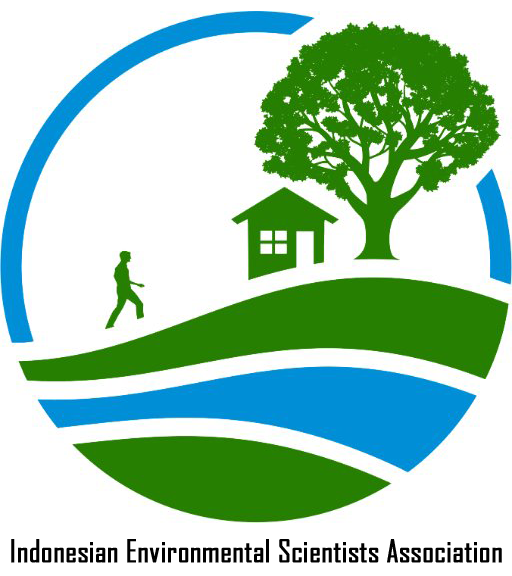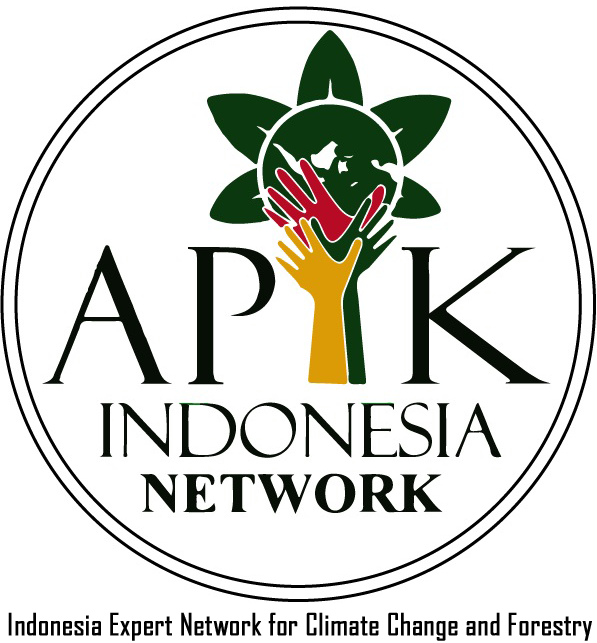Prediksi Daerah Potensi Bencana Kebakaran Hutan Akibat Perubahan Penggunaan Lahan di Kabupaten Paser, Kalimantan Timur
Abstract
Keywords
Full Text:
PDF (Bahasa Indonesia)References
M. D. P. Riyadi, Y. Setiawan, and M. Taufik, “Pola Distribusi Spasial-Temporal Hotspot dan Variasi Standardized Precipitation Index pada Lahan Gambut Tropis di Kepulauan Meranti, Riau,” J. Ilmu Lingkung., vol. 20, no. 3, pp. 457–464, Jul. 2022, doi: 10.14710/jil.20.3.457-464.
S. E. Page and A. J. Baird, “Peatlands and Global Change: Response and Resilience,” Annu. Rev. Environ. Resour., vol. 41, no. 1, pp. 35–57, Nov. 2016, doi: 10.1146/annurev-environ-110615-085520.
M. R. C. Posa, L. S. Wijedasa, and R. T. Corlett, “Biodiversity and Conservation of Tropical Peat Swamp Forests,” Bioscience, vol. 61, no. 1, pp. 49–57, Jan. 2011, doi: 10.1525/bio.2011.61.1.10.
R. K. Somashekar, P. Ravikumar, C. N. Mohan Kumar, K. L. Prakash, and B. C. Nagaraja, “Burnt area mapping of Bandipur National Park, India using IRS 1C/1D LISS III data,” J. Indian Soc. Remote Sens., vol. 37, no. 1, pp. 37–50, Aug. 2009, doi: 10.1007/S12524-009-0010-1/METRICS.
S. Reis, “Analyzing Land Use/Land Cover Changes Using Remote Sensing and GIS in Rize, North-East Turkey,” Sensors 2008, Vol. 8, Pages 6188-6202, vol. 8, no. 10, pp. 6188–6202, Oct. 2008, doi: 10.3390/S8106188.
T. Lillesand, R. Kiefer, and J. Chipman, Remote sensing and image interpretation, vol. 39. John Wiley & Sons, 2014. Accessed: May 20, 2023. [Online]. Available: https://www.wiley.com/en-ie/Remote+Sensing+and+Image+Interpretation%2C+7th+Edition-p-9781118343289
R. Asra et al., “Penerapan Model CA-Markov Untuk Prediksi Perubahan Penggunaan Lahan Di Sub-DAS Bila Tahun 2036,” AGROVITAL J. Ilmu Pertan., vol. 5, no. 1, pp. 1–10, May 2020, doi: 10.35329/AGROVITAL.V5I1.630.
M. Fadhli, Rifardi, and S. Tarumun, “Pemodelan penggunaan lahan di Kabupaten Kampar,” J. Ilmu Lingkung., vol. 14, no. 1, pp. 52–65, Mar. 2020, doi: 10.31258/JIL.14.1.P.52-65.
R. Adhiatma, Widiatmaka, and I. Lubis, “Perubahan penggunaan/ tutupan lahan dan prediksi perubahan penggunaan/ tutupan lahan di Kabupaten Lampung Selatan,” J. Pengelolaan Sumberd. Alam dan Lingkung. (Journal Nat. Resour. Environ. Manag., vol. 10, no. 2, pp. 234–246, Jul. 2020, doi: 10.29244/jpsl.10.2.234-246.
A. Fatah, “STUDY KINERJA KOMODITAS KELAPA SAWIT DI KALIMANTAN TIMUR,” Agrifor J. Ilmu Pertan. dan Kehutan., vol. 12, no. 2, pp. 96–109, Nov. 2013, doi: 10.31293/af.v12i2.326.
K. Alkaradaghi et al., “Evaluation of Land Use & Land Cover Change Using Multi-Temporal Landsat Imagery: A Case Study Sulaimaniyah Governorate, Iraq,” J. Geogr. Inf. Syst., vol. 10, no. 3, pp. 247–260, Jun. 2018, doi: 10.4236/JGIS.2018.103013.
I. W. S. Dharmawan, B. H. Saharjo, S. Supriyanto, and H. S. Arifin, “Persamaan Alometrik dan Cadangan Karbon Vegetasi pada Hutan Gambut Primer dan Bekar Terbakar,” J. Penelit. Hutan dan Konserv. Alam, vol. 2013, no. 2, pp. 175–191, 2013, doi: 10.20886/jphka.2013.10.2.175-191.
M. Isaac and D. P. van Vuuren, “Modeling global residential sector energy demand for heating and air conditioning in the context of climate change,” Energy Policy, vol. 37, no. 2, pp. 507–521, Feb. 2009, doi: 10.1016/J.ENPOL.2008.09.051.
I. Lestari, D. Murdiyarso, and M. Taufik, “Rewetting Tropical Peatlands Reduced Net Greenhouse Gas Emissions in Riau Province, Indonesia,” Forests, vol. 13, no. 4, p. 505, Mar. 2022, doi: 10.3390/f13040505.
M. D. P. Riyadi, Y. Setiawan, M. Taufik, and P. Tanoto, “Mapping of Potential Hazard Areas for Forest and Land Fire based on GIS in Kepulauan Meranti Regency, Riau,” IOP Conf. Ser. Earth Environ. Sci., vol. 1030, no. 1, p. 012014, Jun. 2022, doi: 10.1088/1755-1315/1030/1/012014.
T. F. Dicelebica, A. A. Akbar, and D. R. Jati, “Identifikasi dan Pencegahan Daerah Rawan Bencana Kebakaran Hutan dan Lahan Gambut Di Kalimantan Barat,” J. Ilmu Lingkung., vol. 20, no. 1, pp. 115–126, Jan. 2022, doi: 10.14710/jil.20.1.115-126.
I. S. Sitanggang et al., “Indonesian Forest and Land Fire Prevention Patrol System,” Fire, vol. 5, no. 5, p. 136, Sep. 2022, doi: 10.3390/FIRE5050136.
DOI: http://dx.doi.org/10.33021/jenv.v9i1.4441
Copyright (c) 2024 Maulana Dwi Putra Riyadi, Salis Deris Artikanur, Salim Suliman

This work is licensed under a Creative Commons Attribution-ShareAlike 4.0 International License.
Journal of Environmental Engineering and Waste Management Published by PresUniv Press, in collaboration with IESA and APIK Indonesia Network




